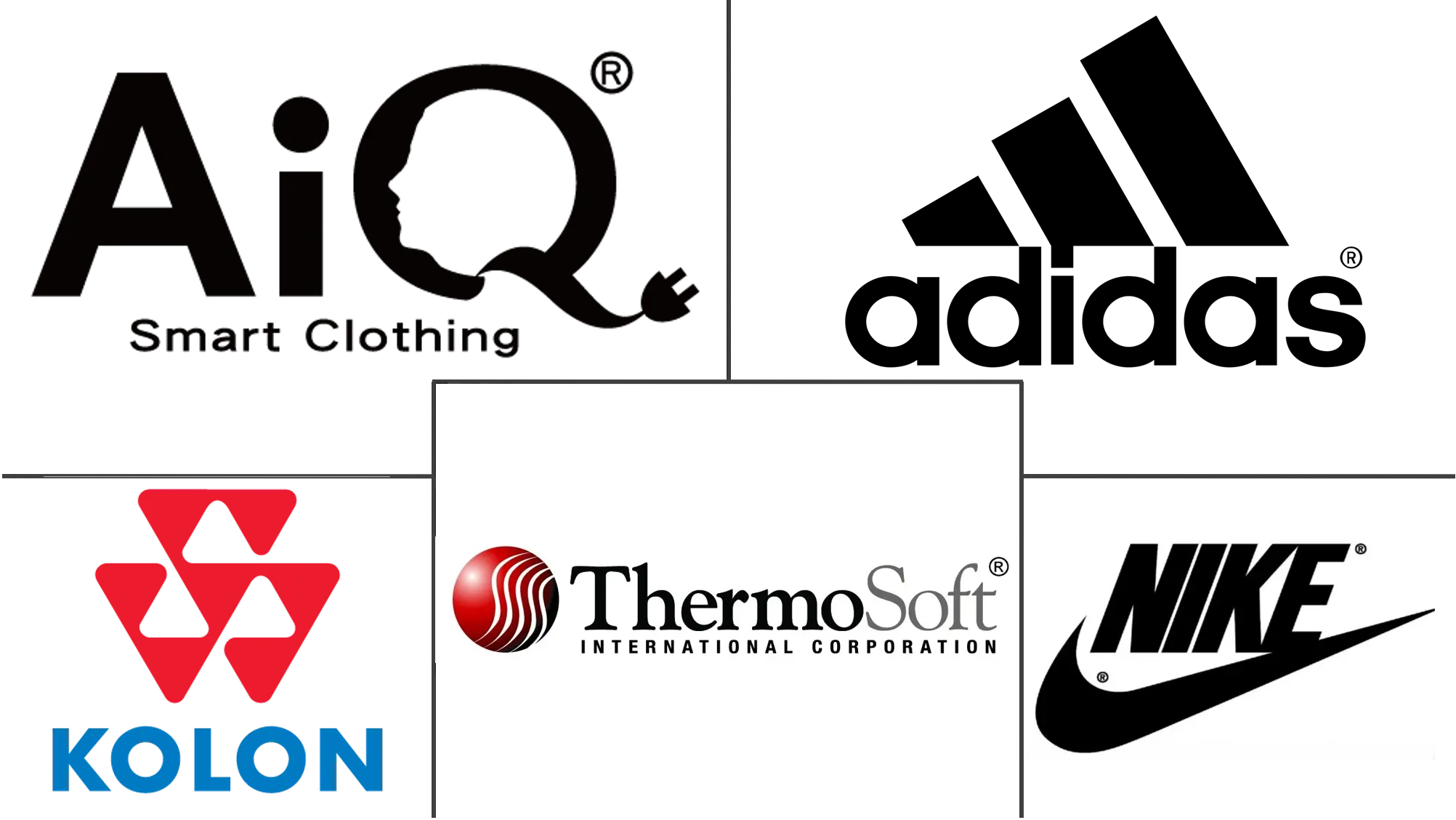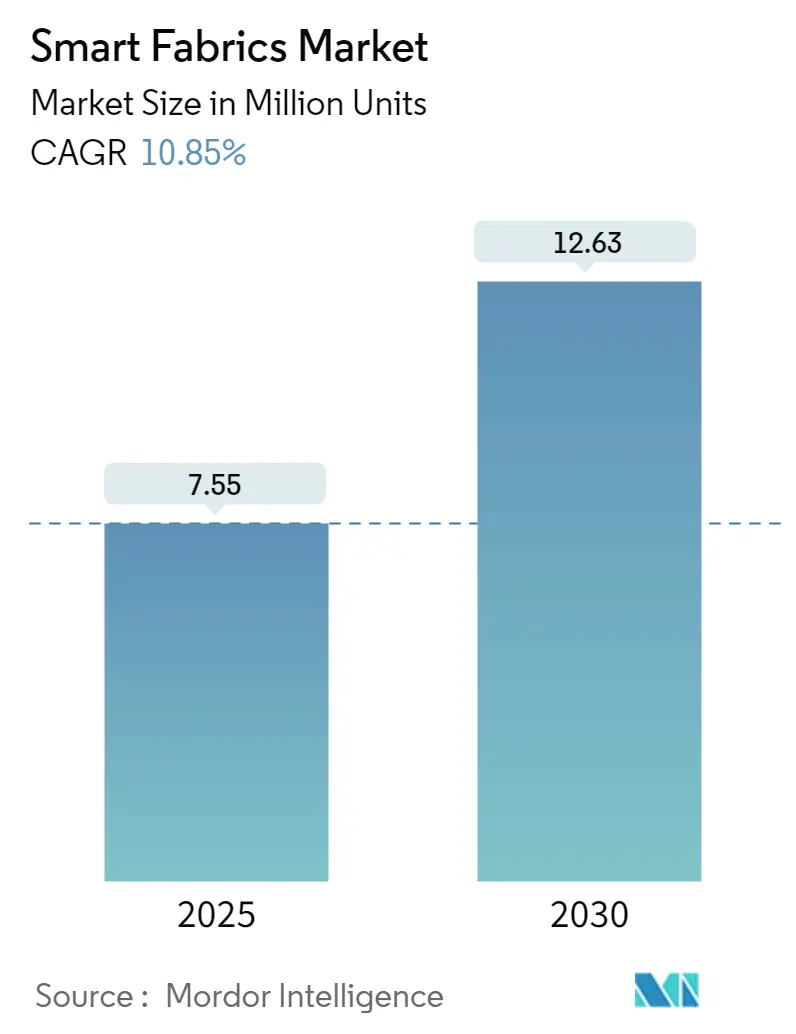
Smart Fabrics Market Analysis
The Smart Fabrics Market size is estimated at 7.55 million units in 2025, and is expected to reach 12.63 million units by 2030, at a CAGR of 10.85% during the forecast period (2025-2030).
Smart textiles are fabrics that are manufactured and designed to integrate technologies that offer the user increased functionality. R&D toward wearable textile-based personal systems, such as health monitoring, protection and safety, and healthy lifestyles, gained major interest over the last few years. Recently, MIT developed smart clothing that follows the most important indicators of human health, i.e., heart rate, respiratory rate, and temperature. This was achieved by sewing into the fabric of sensitive sensors that fit the skin.
- The growth in the wearable electronics industry is driving the market. The growing demand for smart wearables across various end-user industries is the major factor driving the growth of the smart fabric market. A significant amount of effort is witnessed to expand what fabric wearables can do with respect to payments. Mastercard partnered with Timex to integrate contactless payments into their watches, while a U.K.-based CashCuff did the same with the cufflinks. When such distinguished applications become mainstream, which it has, the market is very likely to shift to accommodate similar trends in smart fabrics.
- Miniaturization of electronics and developments across flexible electronics is driving the market. The efficiency of smart fabrics is enhancing with the advancement in miniaturized electronic items, such as sensors, actuators (for active smart textiles), and controlling units (advanced smart textiles). Significant expertise in multifunctional plastics manufacturing, nanoscale manufacturing, and printed electronics has been seen. For instance, UMass Lowell develops flexible electronics and smart textiles-some ongoing research projects. We are developing high-frequency printed conformal antennas, carbon-based transistors, and photonic devices and researching wearable antennas for the military.
- Further, the developments on wearable triboelectric nanogenerators in shapes of fiber, yarn, and textile enable a signficant development in the market studied. These nanogenerators, when effectively integrated with devices such as supercapacitor, lithium battery, and solar cell, their feasibility for realizing self-charging wearable systems have been proven to attract the attention of smart wearables.
- For instance, Nextiles, a textile manufacturing firm, recently entered the sports and performance industry with smart thread technology that records physiological and biomechanical data. The flexible cloth used in everyday sportswear was created by Nextiles by fusing conventional stitching methods with printed circuit boards. Nextiles' fabrics enable biomechanic and biometric sensing recorded on one platform owing to the patented production technique.
- Further, with the outbreak of COVID-19, the market did not experience substantial growth. This is because manufacturing smart fabric needed a high degree of automation and advancements in textile processing techniques such as electronic controlling system, computer-aided design, automated inspection, etc. The industry did not come under the essential services segment as it was considered in the 'apparel and lifestyle goods' category, resulting from which factories were currently not under operations.
Smart Fabrics Market Trends
Fashion and Entertainment Industry to Witness Significant Growth
- The fashion and entertainment industry uses smart fabrics to incorporate unique aesthetics into clothing. Appearance features, such as color, size, or shape of garments, can be altered using technology woven into fabrics. Smart fabrics in clothes enable the user to interact with their surroundings and communicate data via embedded sensors or conductive yarn through the clothes they wear with wearable devices.
- In the fashion industry, the market studied is driven by innovations of the designers coming up with new and aesthetically pleasing outfits integrated with a useful technical architecture capable of relaying information. Many brands, including Uniqlo to Lululemon, use smart fabrics to set their collections ahead of the pack.
- Many prominent brands such as Under Armour, Levi's, and Tommy Hilfiger, among others, along with smaller companies such as Sensora, Loomia, Hexoskin, CuteCircuit, are offering their smart clothing that are using smart fabrics to set their collections ahead of the others. For instance, CuteCircuit utilizes smart fabrics for its haute couture collections and special projects. CuteCircuit's 'Hug Shirt' allows the user to send electronic hugs through sensors within the garment.
- The French startup Spinali Design makes high-end beachwear with integrated ultraviolet light sensors that tell the wearer when it's time to apply sunscreen and distance trackers that tells the parents when the kids have wandered too close to the surf.
- Further, for the past few years, Google worked with Levi Straus on a future smart jean jacket under Project Jacquard, which would eventually lead to a jean jacket with smart fabric sleeves and built-in touch controls.
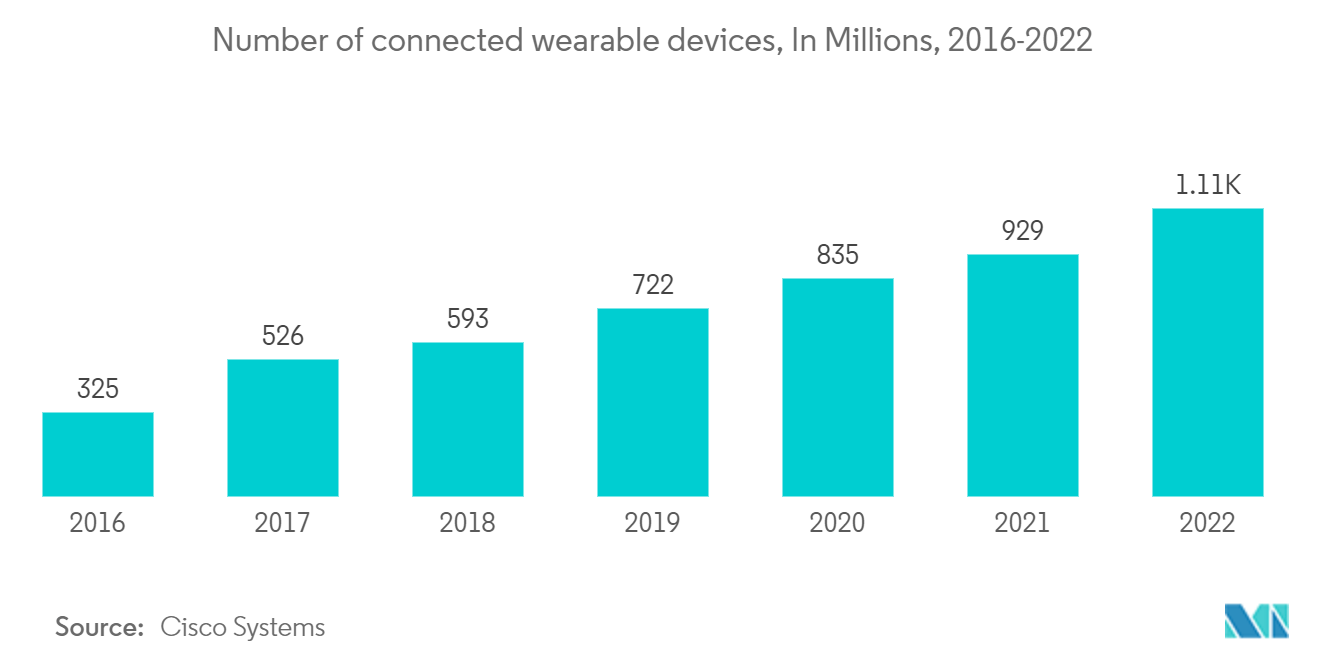
North America to Account for a Significant Market Share
- North America is anticipated to substantiate a prominent share in the smart fabrics market, with the United States region accounting for the major share. Connected wearable products are gaining significant trends and have been around in various forms, such as fitness bands, smartwatches, smart glasses, and among others.
- This increasing adoption of wearable electronics devices is anticipated to open new avenues for the smart fabrics market as they offer significant enhancements to human comfort, health, and well-being.
- Furthermore, the Canadian military has used full-fabric keyboards in its IAV Stryker units, developed to replace the bulky, traditional hardware. These are designed to be lighter, more comfortable to transport, and have fewer components to break.
- Moreover, the level of research for developing smart fabrics has taken a step ahead in the region. The region has been witnessing research and developments to create adaptive thermal clothing that could help control the microclimate around each individual. For instance, Kestrel Materials, an OtherLab spin-out company, commercializes thermally adaptive garment technology based on textile bimorph structure with strategically mismatched coefficients of thermal expansion.
- In July 2022, MIT researchers developed smart fabrics that adapt to the body to sense the wearer's position and actions using an innovative production process. The researchers were able to significantly increase the precision of pressure sensors woven into multilayered knit textiles known as 3DKnITS by integrating a particular kind of plastic yarn and applying thermoforming. This method was utilized to develop a "smart" shoe and mat, and a hardware and software system was then developed to collect and analyze data from the pressure sensors in real time. With an accuracy rate of roughly 95%, the machine-learning algorithm anticipated the movements and yoga positions that a person would make while standing on the smart textile mat.
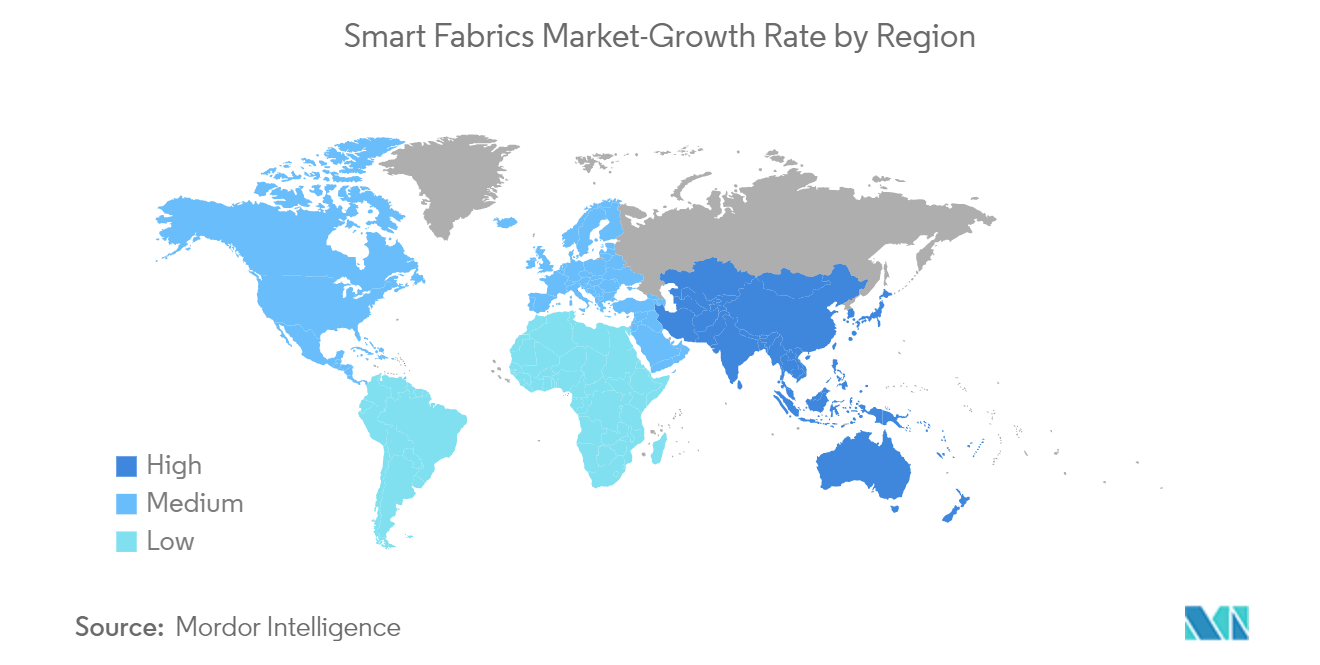
Smart Fabrics Industry Overview
The Smart Fabrics Market is fragmented because multiple vendors have been witnessed raising funding recently to be channelized onto productions. For instance, Xenoma raised funds through additional investment by AOKI and TOYOSHIMA. These instances cater to market rivalry. Further, forward integration has been witnessed when considering the integrator-level stakeholders. With companies like Hexoskin and Sensoria, the competition has risen concerning end-consumer manufacturability. Recent developments in the market are -
In May 2023, Schoeller Textil AG has announced to launch its new sustainable collection Re-Source as part of its comprehensive brand strategy. Re-Source uses recycled materials from both bio-based and polyester and spandex fabrics, while offering modern design and high functionality.
In Februray 2023, New textiles developed at Aalto University in Finland that change shape according to temperature levels, where This innovation offers opportunities in the apparel sector for adjustable aesthetics, fabrics that could help monitor people’s health, and improve thermal insulation.
In July 2022, Loomia Technologies, based in Culver City, California, collaborated with Advanced Functional Fabrics of America (AFFOA) to produce highly tactile, heated handwear for commercial/recreational and military customers. AFFOA will lead consumer discovery, provide architectural system designs, and create an interface control unit, while Loomia will contribute its innovative e-textile technology to making heated handwear a reality.
Smart Fabrics Market Leaders
-
AIQ Smart Clothing Inc.
-
Adidas AG
-
NIKE Inc.
-
ThermoSoft International Corporation
-
Kolon Industries Inc.
- *Disclaimer: Major Players sorted in no particular order
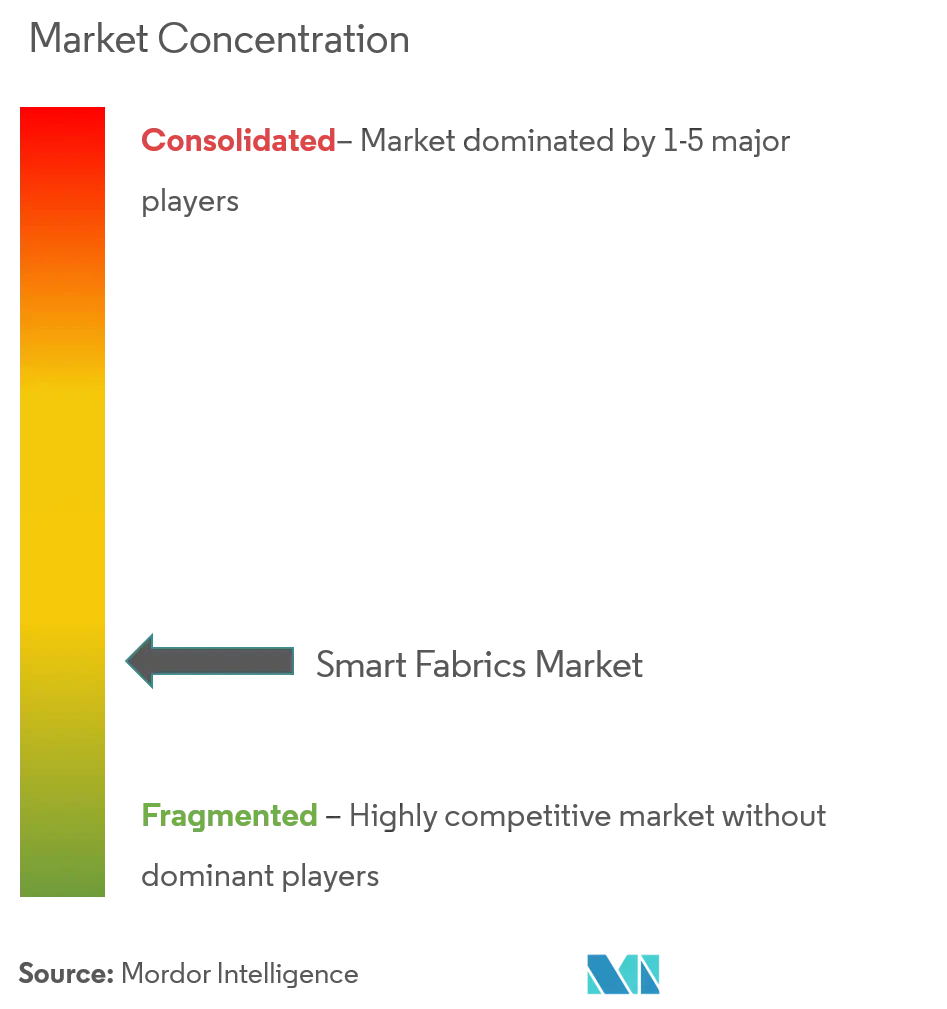
Smart Fabrics Market News
- April 2023 : A team at Cambridge University has developed a fabric that would incorporate LEDs, energy harvesting, storage capabilities, and sensors into clothing. The researchers have exhibited a method to produce next-generation smart textiles inexpensively and without changing the technology currently used for textile manufacturing.
- March 2023 : Schoeller Textil AG Launches Re-Source, A Sustainable Textile Collection, where Re-Source offers breathability and thermal regulation and is wind and water-resistant. It is made from bio-based, post- and pre-consumer materials, including recycled polyester and spandex.
- April 2022:At the Smart Textiles Summit, Advanced Functional Fabrics of America (AFFOA) presented and set up an exhibit where the company displayed the advanced functional fiber preforms and fibers with LED chips. The Advanced Functional Fabrics of America (AFFOA) is constantly at the forefront of technological advancements for high-tech textile systems.
Smart Fabrics Industry Segmentation
Smart fabrics are fibrous structures capable of sensing, actuating, generating/storing power, and/or communicating. The study highlights various stakeholders who are involved in the manufacturing of the smart fabric and the components involved, such as actuator materials, conductive materials, sensor materials, and electronics and providing solutions across various applications such as Fashion and Entertainment, Sports and Fitness, Medical and Healthcare, Transportation, and others.
The smart fabrics market is segmented by type (passive smart fabrics, active fabrics, ultra-smart fabrics), application (fashion and entertainment, sports and fitness, medical, transportation and others, space and military, industrial), and geography (North America, Europe, Asia-Pacific, Latin America, Middle-East and Africa) .The market sizes and forecasts are provided in terms of value (USD) for all the above segments.
| Type | Passive Smart Fabrics |
| Active Fabrics | |
| Ultra-smart Fabrics | |
| Application | Fashion and Entertainment |
| Sports and Fitness | |
| Medical | |
| Transportation and Others | |
| Space and Military | |
| Industrial | |
| Geography | North America |
| Asia Pacific | |
| Europe | |
| Rest of the World |
Smart Fabrics Market Research FAQs
How big is the Smart Fabrics Market?
The Smart Fabrics Market size is expected to reach 7.55 million units in 2025 and grow at a CAGR of 10.85% to reach 12.63 million units by 2030.
What is the current Smart Fabrics Market size?
In 2025, the Smart Fabrics Market size is expected to reach 7.55 million units.
Who are the key players in Smart Fabrics Market?
AIQ Smart Clothing Inc., Adidas AG, NIKE Inc., ThermoSoft International Corporation and Kolon Industries Inc. are the major companies operating in the Smart Fabrics Market.
Which is the fastest growing region in Smart Fabrics Market?
Asia Pacific is estimated to grow at the highest CAGR over the forecast period (2025-2030).
Which region has the biggest share in Smart Fabrics Market?
In 2025, the North America accounts for the largest market share in Smart Fabrics Market.
What years does this Smart Fabrics Market cover, and what was the market size in 2024?
In 2024, the Smart Fabrics Market size was estimated at 6.73 million units. The report covers the Smart Fabrics Market historical market size for years: 2019, 2020, 2021, 2022, 2023 and 2024. The report also forecasts the Smart Fabrics Market size for years: 2025, 2026, 2027, 2028, 2029 and 2030.
Our Best Selling Reports
Smart Fabrics Industry Report
Statistics for the 2025 Smart Fabrics market share, size and revenue growth rate, created by Mordor Intelligence™ Industry Reports. Smart Fabrics analysis includes a market forecast outlook for 2025 to 2030 and historical overview. Get a sample of this industry analysis as a free report PDF download.

